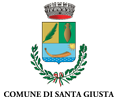Discover Romanesque: Peoples and Legends
Anselm of Lucca
Bishop of Lucca from 1057, Milan-born Anselm of Lucca rose to the papal throne in 1061 under the name of Alexander II: he stood as one of the key characters of the Gregorian Reform, a movement of spiritual reformation of the church that took its name from his successor, Gregory VII, born Ildebrando di Soana. It was Ildebrando himself who supported Anselm's election, in contrast with the emperor, who had appointed the anti-pope Cadalo.
Notwithstanding the latter’s election, Anselm kept covering his role as bishop of Lucca until his death (1073). During the years of his episcopal charge, the clergy’s morality was supported thanks to the institution of a number of parsonages; in the same direction, architectural and artistic production received an impulse to inspire its forms to palaeo-Christian art. The reconstruction of the pieve di San Giorgio di Brancoli is set within this context, being closely dependent on the Luccan basilica of Sant'Alessandro, where Anselm transferred the mortal remains of the saint of the same name.
























